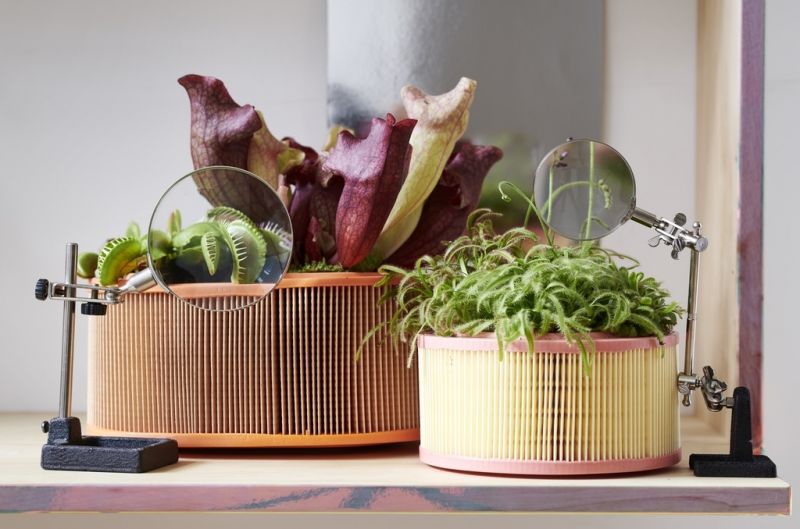
They look like they come out of a fairy tale, with their odd shapes and dazzling (mix of) colours. Yet, carnivorous plants, or otherwise referred to as meat eaters, ensure that insects do not live happily ever after. They lure flies and spiders with their appearance, catch and digest them to obtain sufficient nutrients. With which these houseplants once again prove that nature, just like many fairy tales, is beautiful but relentless.
Catching prey
The most well-known carnivorous houseplants are the Venus flytrap (Dionaea muscipula), Sundew (Drosera), Pitcher plant (Nepenthes) and Sarracenia. What all of these have in common is that they lure their prey closer to them with their scent and colour, in order to catch them. They do have their own method for this.
The Venus flycatcher uses its hairy leaves, if these are triggered, an electric charge will close the trap and the plant will form a cage. The Sundew got this name due to its sticky tentacle tips, which resemble drops of morning dew. These tentacles both attract and catch prey. Moreover, the edges of the leaves are provided with snap tentacles, immediately folding up when disturbed, making sure that the sticky dew is touching the prey. This whilst the Pitcher plant and Sarracenia both have the form of a pitcher to which insects are lured while in search for nectar.
Origin of carnivorous plants
In nature, carnivorous plants live in low-nitrogen soil areas, such as swamps. The Venus flycatcher is originally from the North Carolinian swamps whereas the Sarracenia grows in peatlands, also in the United States. The Sundew can be found in Australia, New Zealand and in Europe and the Pitcher plant resides in swampy areas of tropical rain forests on different continents. Nevertheless, the plants are quite rare, so you won’t spot them in nature very soon.
Looking after carnivorous plants
Besides the great looks and functionality, carnivorous plants are also rather easy to take care of:
- most carnivorous plants like the full sun;
- and a swamp environment, so its recommended to stimulate one;
- they prefer to drink rainwater, distilled water of soft tap water;
- Carnivorous plants don’t need any plant food – after all, they catch their own meals;
- in order to prevent fungi, remove dead brown leaves and pitchers;
- don’t give them any meat, it will cause traps to rot;
- repot carnivorous plants in spring every other year;
- traps will wither in winter but reappear in spring.
